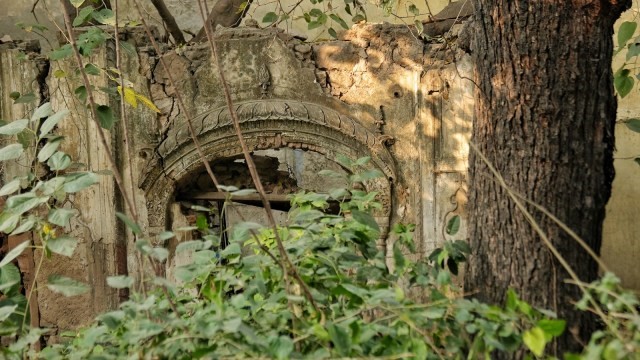Description

Disclaimer: Copyright infringement not intended.
Context
From a Mughal-sponsored structure to a concrete building, the Yogmaya Temple in Mehrauli is a historically important monument believed to be standing at the site of an ancient temple that is said to have come up during the period of the Mahabharata but of which no trace exists anymore.
Details
- The Yogmaya Temple, also known as Jogmaya Temple or Jogmaya Mandir, holds significant historical and religious importance in India.
- Dedicated to the goddess Yogmaya, believed to be the sister of Lord Krishna and an incarnation of Durga, the temple's history is intertwined with ancient mythology and has witnessed phases of destruction and reconstruction by various rulers.
Historical Significance
- Ancient Roots: The temple's origins are traced back to the Mahabharata era, believed to have been built by the Pandavas after the end of the epic war.
- Historical Destruction: The temple was among the 27 temples reportedly destroyed by Mamluk rulers. However, it stands as the sole surviving temple from the pre-sultanate period and is still actively used for worship.
- Reconstruction: Hindu king Samrat Vikramaditya Hemu is credited with restoring the temple after its destruction by Islamic rulers.
Architectural Description
- Structural Evolution: The present temple, reconstructed in the 19th century, is a contemporary structure comprising an entrance hall, a sanctum sanctorum housing the main idol of Yogmaya, and a dome and truncated shikara (tower).
- Idol and Worship: The main idol, made of black stone and adorned with sequins and cloth, represents Yogmaya. Devotees offer flowers and sweetmeats without the tolling of bells during worship.

Folklore and Cultural Events
- Folk Legends: The temple is associated with folklore related to Yogmaya's incarnation as Krishna's sister and her pivotal role in predicting Kansa's demise.
- Phool Walon Ki Sair Festival: An integral part of an inter-faith festival in Delhi, the temple is central to this annual event where floral punkahs are offered to the deity.
Historical References and Affiliations
- Mughal Connection: Records suggest Emperor Akbar II's association with the temple, with legends of his wife praying for her son's safe return, invoking Yogmaya's blessings.
- Geographical Association: The temple lies within the Lal Kot walls, part of the historic fortress citadel of Delhi, and holds a significant place near the Qutb Complex.
Continuing Tradition and Care
- Community's Role: The local community, consisting of over 200 people tracing their ancestry to a common forefather, actively participate in temple maintenance and rituals, following age-old customs.
- Cultural Expansion: Similar temples dedicated to Yogmaya exist across India in places like Rajasthan, Vrindavan, Dehradun, among others.
- Jogmaya Temple, Barmer Rajasthan
- Jogmaya Temple, Multan
- Jogmaya Temple, Jodhpur, Rajasthan
- Yogmaya Temple, Vrindavan
- Yogmaya Temple, Naya Bans Khari Baoli, Old Delhi
- Yogmaya Temple, Dehradun, Uttarakhand
- Jogmaya Tripura Sundari Temple
.jpg)
Conclusion
The Yogmaya Temple in Mehrauli stands not only as a place of worship but also as a testament to Delhi's syncretic heritage, reflecting architectural, religious, and cultural influences from different periods in history. Despite undergoing various reconstructions and facing periods of destruction, its resilience and continued significance in contemporary religious practices highlight its enduring legacy.
|
PRACTICE QUESTION
Q. Which historical figure is associated with the restoration of the Yogmaya Temple after its destruction by Islamic rulers?
A) Akbar II
B) Samrat Vikramaditya Hemu
C) Qutbuddin Bakhtiar Kaki
D) Mirza Jehangir
Correct Answer: B)
|















